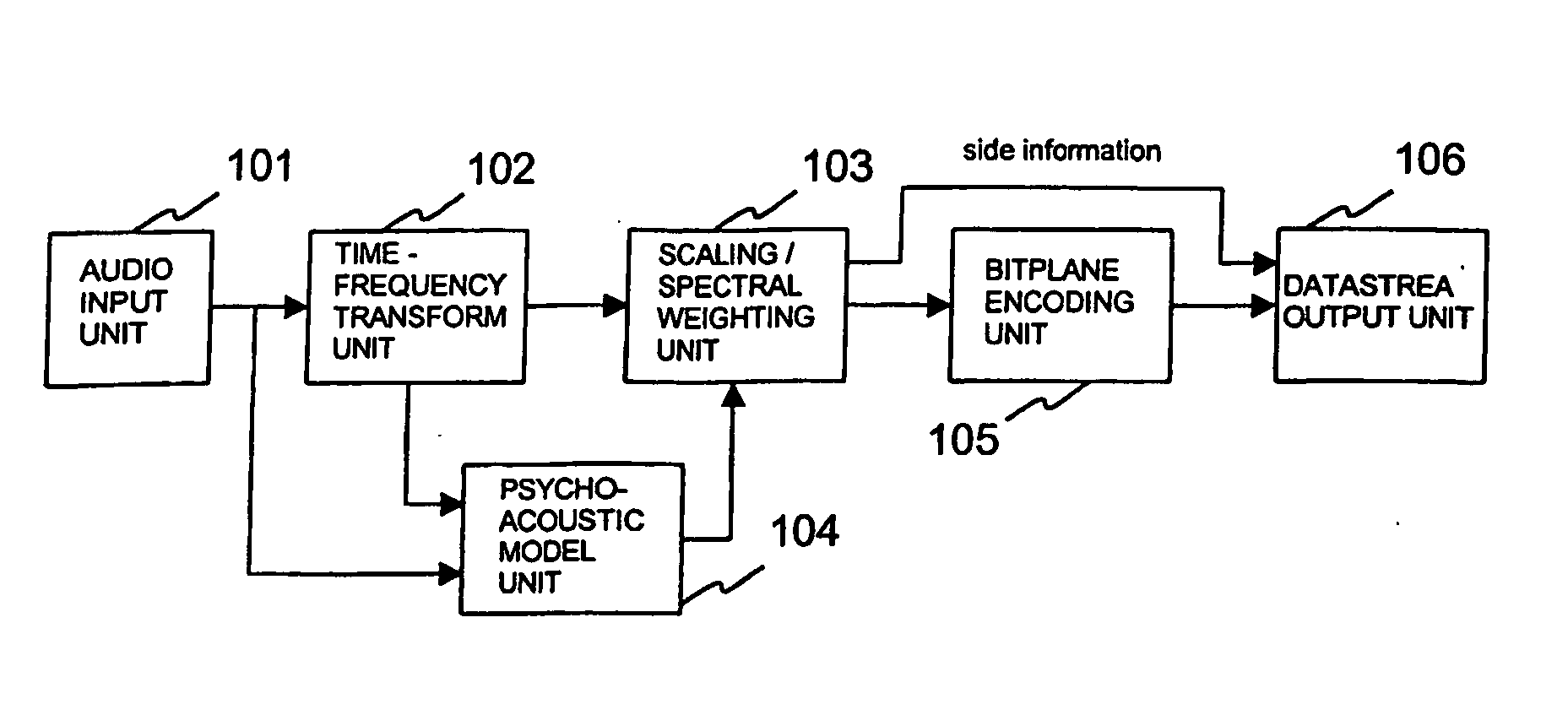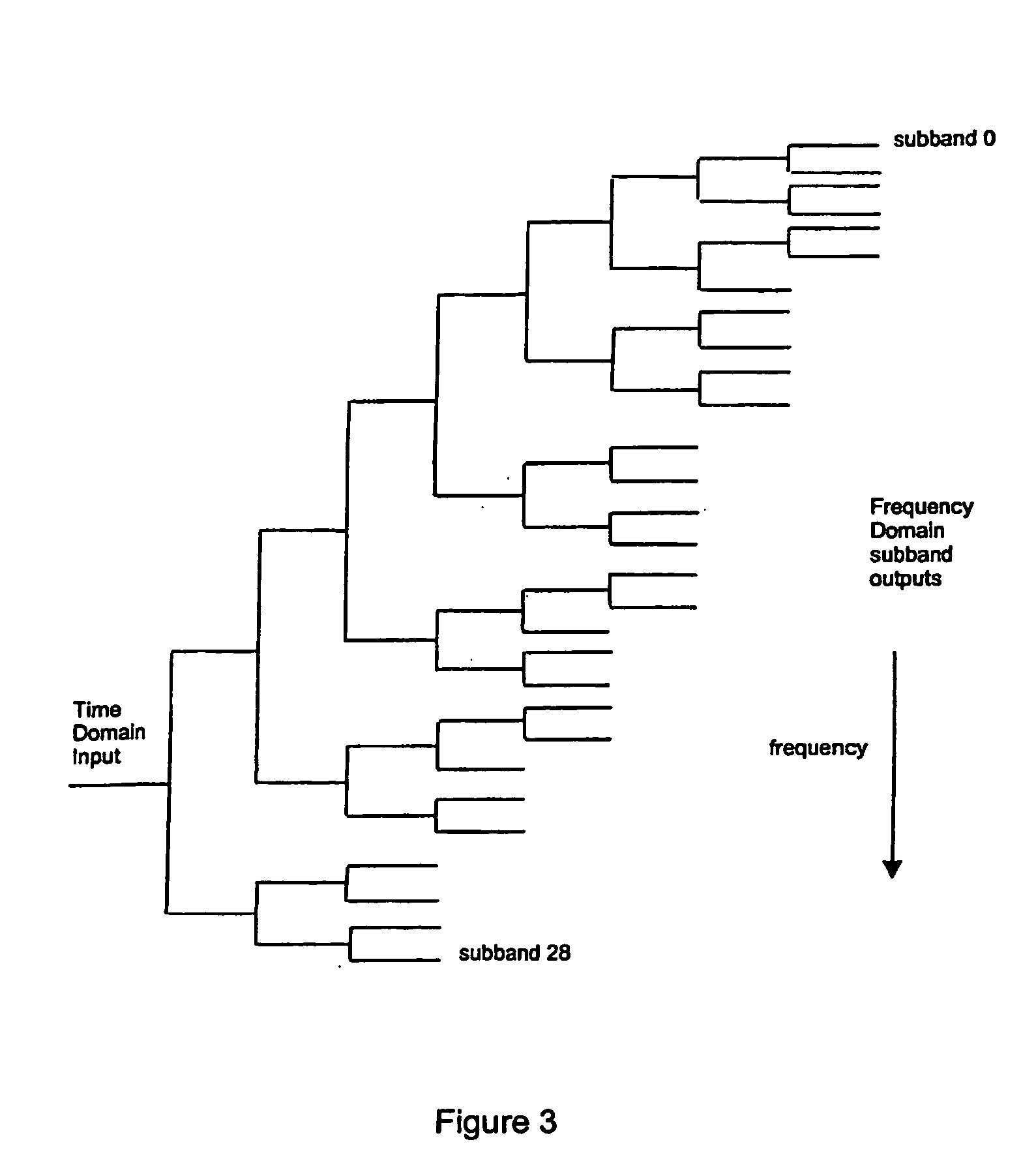Audio compression
- Summary
- Abstract
- Description
- Claims
- Application Information
AI Technical Summary
Benefits of technology
Problems solved by technology
Method used
Image
Examples
first embodiment
[0173]FIG. 6 is a block diagram of an audio decoding apparatus also according to the invention. The decoding apparatus comprises a datastream input unit 601, a bitplane decoding unit 602, an inverse scaling and weighting unit 603, a frequency-time transform unit 604, and an audio output unit 605.
[0174] Coded data frames representing bitplane-encoded audio data are received by a datastream input unit 601. The datastream input unit 601 may be a storage device such as a hard disk, a RAM, and a CD-ROM, or an interface to a public telephone line, a radio line, a LAN or the like.
[0175] The coded data is input to a bitplane decoding unit 602 that reconstructs transform coefficients in bitplane order. FIG. 7 shows a general bitplane decoding algorithm 602, where decoding of each frame begins at step s701 by storing coded data for the frame in an input buffer, and using the amount of coded data read for the frame to initialise a bit allocation variable. Before decoding the first bitplane th...
second embodiment
[0180] Referring once again to FIG. 1, the bitplane encoding unit 105 codes coefficient bitplanes in order of significance. The operation of an example bitplane encoding process 105 for one frame of audio data using a fixed-bandwidth bitplane coding algorithm of the invention will now be described with reference to FIG. 8.
[0181] The first step s801 of the encoding algorithm initialises a bit allocation variable for the frame. Then at step s802 transform coefficients are reordered to a list of insignificant coefficients (LIC), and at step s803 a list of significant coefficients (LSC) is initialised to an empty list. Then for each bitplane, beginning with the most significant bitplane determined at s804, a runlength coder is used to identify newly-significant coefficient locations within the LIC (step s805), followed by a refinement stage s806 that outputs less significant bits of significant coefficients identified in earlier bitplanes.
[0182] The reordering step s802 involves mappin...
sixth embodiment
[0236] Referring once again to FIG. 15, the layered bitplane decoding unit 1502 decodes a set of coefficients in each bitplane of each layer that is restricted to coefficient frequencies within the bandwidth limit of the respective layer. The operation of a layered bitplane decoding process 1502 according to the invention (not shown) mirrors the encoding algorithm shown in FIG. 18. Hence for each bitplane within each layer, significance map decoding comprises the steps of subsequence formation using the same context rules used in the encoder, decoding subsequence runlength codes and sign bits, and decoding LIC runlength codes and sign bits.
PUM
 Login to View More
Login to View More Abstract
Description
Claims
Application Information
 Login to View More
Login to View More - R&D
- Intellectual Property
- Life Sciences
- Materials
- Tech Scout
- Unparalleled Data Quality
- Higher Quality Content
- 60% Fewer Hallucinations
Browse by: Latest US Patents, China's latest patents, Technical Efficacy Thesaurus, Application Domain, Technology Topic, Popular Technical Reports.
© 2025 PatSnap. All rights reserved.Legal|Privacy policy|Modern Slavery Act Transparency Statement|Sitemap|About US| Contact US: help@patsnap.com



